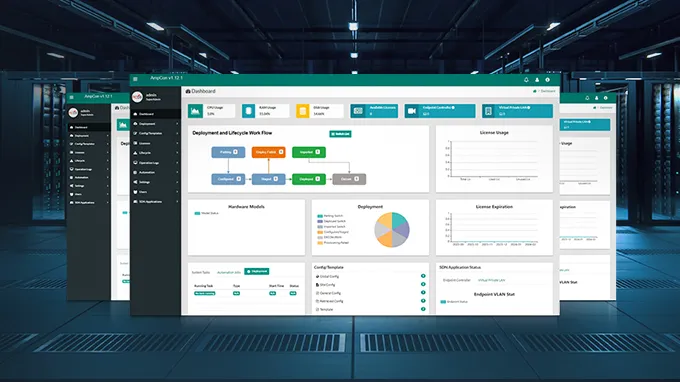How to Choose an Ethernet Cable?
Demystify and Explore the Industry Secrets Behind Ethernet Cables
In today's digital world, having reliable and efficient Ethernet cables is crucial for a smooth and uninterrupted internet connection. However, with so many ethernet cable types like cat6, and cat7 available in the market, choosing a suitable Ethernet cable type may seem overwhelming. This article aims to help you know how to choose an Ethernet cable.
How to Choose an Ethernet Cable: by Ethernet Cable Category
Appropriate Ethernet cables will help to realize better connections. To realize this, the Ethernet cable category matters. There are commonly two ways to classify the Ethernet cable category: by cable speed and by shielding type. They will be described in detail below.
By Cable Speed
According to different cable speeds, the most common network cables can be divided into Category 5, Category 5e, Category 6, Category 6a, Category 7, and Category 8 Ethernet cables. The biggest difference between these different Ethernet cable types is their data transmission speed and bandwidth. Check the table below to know the performance of these different Ethernet cable types from Cat5 to Cat8 at a glance:
| Category | Shielding | Data Rate Support | Standard Bandwidth |
|---|---|---|---|
| Cat5 | Unshielded | 100Base-T | 100MHz |
| Cat5e | Unshielded | 10/100/1000Base-T | 100MHz |
| Cat6 | Shielded or Unshielded | 1000Base-T and Maximum to 10GBase-T | 250MHz |
| Cat6a | Shielded | 10GBase-T | 500MHz |
| Cat7 | Shielded | 10GBase-T | 600MHz |
| Cat8 | Shielded | 25/40GBase-T | 2000MHz |
After understanding the performance of different types of network cables, you may find that the Ethernet cables are interchangeable and backward compatible as well. In other words, the priority of these Ethernet cables from Cat5 to Cat8 is Cat8>Cat7>Cat6a>Cat6>Cat5e>Cat5. For detailed information, you can click Cat5 vs Cat5e vs Cat6 Ethernet Cables Quick View.
By Shielding Type: Shielded vs. Unshielded Cable
For STP (Shielded Twisted Pair) cables, the shielding influences the crosstalk a lot. The more shielding layer a cable has, the less crosstalk it will suffer. Two common types are divided into FTP cable (Foil Twisted Pair Cable) & SFTP cable (Shielded and Foiled Twisted Pair Cable). For UTP (Unshielded Twisted Pair) cables, it's not the shielding to reduce interference, it is designed to limit electromagnetic interference by the way the pairs are twisted inside the cable. Typically, the tighter the twisted pair is, the lower the crosstalk is.
For shielded vs. unshielded cable:
STP cables are specifically suitable for environments where there is a high chance of electronic interference, such as radio stations and airports. Also, fit for security systems to protect power frequency and radio frequency interference. While UTP cables are most suitable for LANs and similar network cabling systems, they are popular due to their lightweight, versatile, flexible, inexpensive, and easy-to-install characteristics. For further information, you can click Shielded vs Unshielded Cat6a: How to Choose? Given all these clarified above, having known these different categories of Ethernet cable, be clear about what speed and performance and what shielding type of Ethernet cable you want before choosing an Ethernet cable.
How to Choose an Ethernet Cable: Cable Craftsmanship Matters
When talking about how to choose an Ethernet cable, apart from Ethernet cable categories, cable craftsmanship is another key point to consider. The cable craftsmanship of copper conductor purity, cable jacket rating, and cable connectors are to be introduced in detail below.
By Copper Conductor Purity
When choosing a network cable, the cable material matters. Ethernet cable material, especially copper conductor purity, will not only directly affect the Ethernet cable price, but also essentially influence the performance of the cable.
Copper-clad aluminum wires & copper wires (including pure copper wire, oxygen-free copper wire, and bare copper wire) are available in the market. The biggest difference lies in the purity of copper, which determines the Ethernet cable quality. The purer the copper is, the less signal loss you will suffer. For less signal loss, you'd better choose oxygen-free copper wire with copper purity up to 99.95%. However, if you just wanna cost-saving wires, go with copper-clad aluminum wires.
The purity order of copper, also the order of the cable price, in descending is oxygen-free copper wire > pure copper wire > bare copper wire > copper clad aluminum wire.

By Cable Jacket Rating
Ethernet cable jackets can be made up of different kinds of materials, non-flame retardant & flame retardant jackets. Namely, flame retardant cables are typically designed to resist the spread of fire into a new area. For safety concerns, you'd better buy Ethernet cables that are flame-retardant.
The flame retardant cable types and classes are worthy of attention, such as CM, CMR, CMP, LSZH, etc. Normally, Ethernet cables with PVC CM and LSZH jackets are commonly used in patch-cabling environments. Ethernet cables with CMR jackets are generally used in non-plenum vertical cabling and network cables with CMP jackets are commonly used in plenum places and drop ceilings. For more related info, go check the Ethernet Cable Jacket Ratings.

By Cable Connectors
The material of the connectors or contacts in a cable plug is vital for constant signal maintenance. For conductivity: silver > gold/copper> aluminum > nickel/iron.
Silver and aluminum are extremely oxidizable, while gold is hardly oxidized in the natural environment. Thus, gold is the ideal material for achieving a strong and lasting Internet connection that you will be less likely to lose the signal and won't have to spend more money replacing cables constantly.
What's more, the thickness of gold plating (measured in microns) is also very important. Low-micron plating is easier to wear out in a short amount of time, while thicker plating normally lasts much longer. In most cases, the thickest gold plating available is 50 microns, which is the optimal thickness for maintaining a fast and stable internet connection.

How to Choose an Ethernet Cable: Industry-certified Fluke Test Matters
When choosing, the Ethernet cable quality also matters. High quality Ethernet cables usually pass the Fluke Test. It is a test issued by Fluke Networks that is considered the most authoritative criteria for judging the quality of an Ethernet cable, which tests the Ethernet cable quality according to different cable standards, such as ANSI/TIA, ISO/IEC 11801, etc, covering patch cord testing and channel testing for Ethernet patch cables, and permanent link testing for Ethernet bulk cables. To avoid buying inferior cables, we suggest you buy Ethernet cables from vendors who can provide the Fluke test report to prove the Ethernet cable quality.
Cables passing the patch cord testing will indicate higher performance due to the test being much stricter. For some small networks, passing channel tests is fundamental. However, when deploying patch cables like Cat6 or the category above in DCs, qualifying by patch cord testing is a must.
Note: As for bulk Ethernet cables, the whole length of the permanent link is generally no more than 90m.
How to Choose an Ethernet Cable: What Else to Notice?
Length and color will be another two factors that you need to take into consideration when buying the best Ethernet cable for your networks.
The length: Ethernet copper cabling. When used for 10/100/1000BASE-T, the maximum allowed length of a Cat5e or Cat6 cable is 100 meters (328 ft). Consider the proximity of the devices you wanna connect to get a cord with sufficient length.
The color: Not only for aesthetics. When there are many cables connecting to the Ethernet switches or routers, the color will help to track the cables and make sure the right cable is connected to the right position. Also, better for cable management.
FS: Ethernet Cable Trustworthy Vendor
After knowing what to consider when buying a good Ethernet cable according to quality & performance, you now face picking a trustworthy supplier from vendor to vendor. Network Advisor, a Youtube influencer in the IT infrastructure field, recommended FS Snagless Cat6 Ethernet Cable and noted it "Worth a try" since FS snagless network patch cables have sleek and solid designs and constructions, cost less than most mid-priced network cables, and make cable management easier. Check out this review video now:
You might be interested in
Email Address

-
PoE vs PoE+ vs PoE++ Switch: How to Choose?
May 30, 2024
















